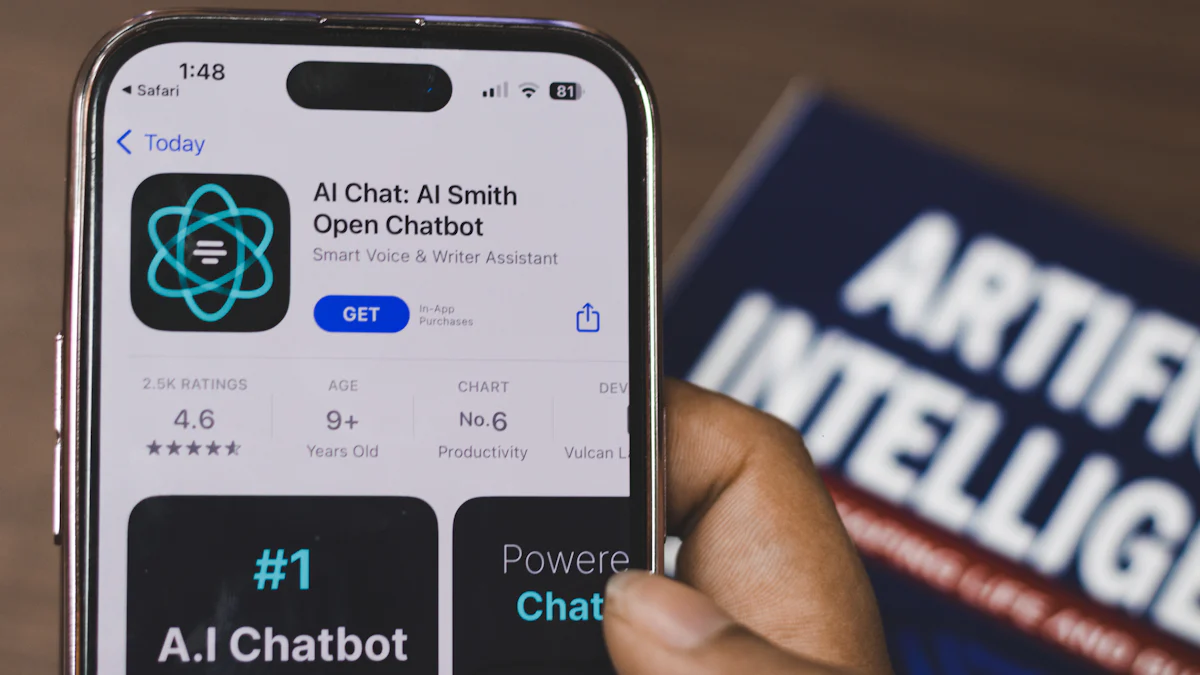Real-Time AI Proofreading vs Traditional Editing Services

AI vs Human Editing: A Comparative Analysis
Exploring the differences between real-time AI proofreading and traditional human editing services
Features | AI Proofreading | Human Proofreading & Editing |
|---|---|---|
Accuracy | Instant corrections for basic errors | Nuanced understanding and context-based corrections |
Contextual Understanding | Struggles with tone and cultural nuances | Tailored feedback for different contexts |
Efficiency | Real-time corrections for quick edits | Thorough review with longer turnaround times |
Cost | Low-cost or free services | Higher pricing for professional editing |
Adaptability | Adapts to various writing styles | Flexibility in handling unique content |
When it comes to achieving error-free writing, you have two main options: real-time AI proofreading and traditional human editing. Real-time AI proofreading tools offer instant corrections, providing low-cost services for grammar, spelling, and punctuation issues. These tools are not only efficient but also accessible, with some even offering free options for quick edits. On the other hand, human editing delivers a level of depth that AI often cannot match, addressing tone, style, and creative nuances. Deciding between these approaches depends on your priorities—whether you value the speed and affordability of AI or the personalized, in-depth feedback of human expertise.
Key Takeaways
Real-time AI proofreading tools provide instant feedback, making them ideal for quick edits and basic grammar checks.
AI proofreading is cost-effective, often offering free or low-cost services, making it accessible for students and small businesses.
Human editing services excel in providing nuanced feedback, addressing tone, style, and context that AI tools may overlook.
For complex or professional writing projects, human editors are recommended for their ability to enhance content quality and ensure accuracy.
Combining both AI tools for initial edits and human editors for final reviews can optimize both efficiency and quality in your writing process.
AI tools are best for casual writing tasks, while traditional editing is essential for high-stakes documents requiring in-depth review.
Understanding Real-Time AI Proofreading and Traditional Editing Services
What is Real-Time AI Proofreading?
Real-time AI proofreading has revolutionized how you can refine your writing. These tools use advanced algorithms to scan your text instantly, identifying and correcting grammar, spelling, and punctuation errors. They also provide suggestions to improve sentence structure and overall readability. The best part? You get immediate feedback, which saves time and ensures your work is polished before submission.
Key features of AI proofreading tools.
AI proofreading tools come packed with features that make them indispensable for writers. Here’s what you can expect:
Real-time feedback: These tools analyze your text as you type, offering instant corrections and suggestions.
Grammar and spelling checks: They catch common errors, ensuring your writing is error-free.
Style improvement: Many tools suggest ways to enhance clarity and coherence, making your content more engaging.
Accessibility: Most tools are available online, making them easy to use anytime, anywhere.
Low-cost services: Many AI proofreading tools offer free or affordable plans, making them accessible to individuals and small businesses.
Examples of popular AI proofreading tools.
Several AI proofreading tools have gained popularity for their efficiency and ease of use. Some of the most widely used include:
Grammarly: Known for its comprehensive grammar and style checks, Grammarly is a favorite among writers.
ProWritingAid: This tool offers in-depth analysis and suggestions to improve your writing style.
Wordvice AI Proofreader: Ideal for academic and professional writing, it ensures high accuracy in grammar and language usage.
These tools act as personal editors, helping you produce polished and professional documents quickly.
What are Traditional Editing Services?
Traditional editing services rely on human expertise to refine your writing. Unlike automated editing tools, human editors bring a nuanced understanding of language, tone, and context. They don’t just correct errors; they also enhance the overall quality of your content by addressing its structure, flow, and creative expression.
Key features of human editing services.
Human editing services stand out for their personalized approach. Here’s what makes them unique:
Nuanced understanding: Human editors excel at interpreting tone, cultural nuances, and creative intent.
In-depth feedback: They provide detailed suggestions to improve your content’s structure, style, and coherence.
Tailored editing: Editors adapt their approach based on your specific needs, whether it’s academic, creative, or professional writing.
High accuracy: Their expertise ensures that even subtle errors are caught and corrected.
Examples of traditional editing services.
Many professional editing services cater to different writing needs. Some well-known examples include:
Scribendi: Offers editing for academic, business, and personal documents with a focus on quality and precision.
Editage: Specializes in academic editing, helping researchers refine their manuscripts for publication.
Kibin: Provides editing and proofreading for essays, resumes, and other personal documents.
These services are ideal for projects requiring a deeper level of review and refinement.
Comparing Key Aspects of AI Proofreading and Traditional Editing

Accuracy
How AI proofreading tools handle grammar, spelling, and punctuation.
AI proofreading tools shine when it comes to catching basic errors. They quickly identify issues like misspellings, misplaced punctuation, and grammatical mistakes. These tools rely on advanced algorithms to scan your text in real-time, ensuring that your writing is free from surface-level errors. For instance, if you accidentally type "their" instead of "there," the tool will flag it instantly. This speed and precision make automated editing tools a go-to choice for quick fixes.
However, while these tools excel at technical accuracy, they may miss context-dependent errors. For example, they might not recognize when a word is spelled correctly but used incorrectly in a sentence. Despite this limitation, their ability to provide instant feedback makes them incredibly efficient for basic proofreading tasks.
The role of human expertise in nuanced editing.
Human editors bring a level of depth that AI proofreading tools cannot replicate. They don’t just focus on grammar and punctuation; they also consider the tone, style, and intent of your writing. For example, if you're crafting a persuasive essay or a creative story, a human editor can ensure that your message resonates with your audience.
Unlike AI, human editors excel at understanding context. They can identify subtle errors, such as inconsistencies in tone or cultural nuances that automated tools might overlook. Their expertise ensures that your writing not only looks polished but also feels authentic and engaging.
Contextual Understanding
Limitations of AI in understanding tone and cultural nuances.
AI proofreading applications are powerful, but they have their limits. While they can analyze text for errors, they often struggle with understanding tone and cultural subtleties. For instance, if you're writing a formal letter, the tool might suggest changes that make the text sound too casual. Similarly, it might not catch phrases or idioms that are inappropriate for certain audiences.
These limitations stem from the fact that AI relies on pre-programmed rules and data. It lacks the human ability to interpret emotions, intentions, and cultural contexts. As a result, while AI proofreading tools are excellent for technical corrections, they may fall short when your writing requires a personal touch.
How human editors excel in providing tailored feedback.
Human editors offer something that AI cannot: personalized feedback. They take the time to understand your goals and tailor their suggestions accordingly. Whether you're writing a business proposal or a heartfelt speech, a human editor can help you strike the right tone and connect with your audience.
Their ability to adapt to different contexts makes them invaluable for complex projects. For example, if you're writing for an international audience, a human editor can ensure that your content is culturally sensitive and universally understood. This level of customization is something that no AI tool can currently match.
Efficiency

Real-time benefits of AI proofreading tools.
One of the biggest advantages of AI proofreading tools is their speed. These tools work in real-time, analyzing your text as you type. This means you can make corrections instantly, without waiting for feedback. For busy professionals or students, this feature is a game-changer. It allows you to polish your work on the go, saving you valuable time.
Additionally, many AI tools are accessible online, making them easy to use anytime, anywhere. Whether you're drafting an email or editing a report, these tools provide quick and efficient solutions. Their low-cost services also make them an attractive option for individuals and small businesses looking for budget-friendly editing.
Turnaround times for traditional editing services.
Traditional editing services, while thorough, require more time. Human editors need to read and analyze your text carefully, which can take hours or even days, depending on the complexity of your project. This longer turnaround time might not be ideal if you're working on a tight deadline.
However, the extra time spent often translates into higher-quality results. Human editors provide in-depth feedback and ensure that every aspect of your writing is polished. If you value quality over speed, traditional editing services are worth the wait.
Cost
Low-cost services offered by AI tools.
If you're looking for an affordable way to polish your writing, AI proofreading tools are a fantastic option. These tools often come with free plans or low-cost services, making them accessible to students, freelancers, and small businesses. For example, many automated editing tools offer basic grammar and spelling checks at no charge, while premium plans unlock advanced features like style suggestions and readability improvements.
The real-time nature of these tools also adds value. You don’t need to wait for feedback or pay extra for faster service. Whether you're drafting an email or editing a report, these tools provide instant corrections without breaking the bank. This affordability makes them a practical choice for everyday writing tasks.
Pricing for professional human editing services.
On the other hand, traditional human editing services come with a higher price tag. Professional editors charge based on the complexity and length of your document. For instance, editing a short essay might cost $50, while refining a lengthy manuscript could run into hundreds of dollars. These services are often priced per word, page, or hour, which can add up quickly for larger projects.
However, the cost reflects the depth of the service. Human editors don’t just fix errors; they enhance tone, structure, and creativity. If you're working on a critical project like a novel or a business proposal, the investment in professional editing can significantly elevate the quality of your work. While it’s not as budget-friendly as AI proofreading, the personalized attention you receive is unmatched.
Adaptability
How AI proofreading tools adapt to different writing styles.
One of the standout features of proofreading applications is their ability to adapt to various writing styles. Whether you're crafting a formal business letter or a casual blog post, these tools analyze your text and suggest changes that align with your tone and purpose. Some even allow you to set preferences, like choosing between American or British English, to tailor the corrections further.
These tools also learn from user input. Over time, they become better at recognizing your unique style, making their suggestions more relevant. This adaptability ensures that your writing maintains its authenticity while still benefiting from real-time corrections. For quick adjustments across different types of content, AI proofreading tools are incredibly versatile.
Flexibility of human editors in handling unique content.
While AI tools are adaptable, human editors bring a level of flexibility that technology can't yet match. They excel at handling unique or complex content, such as creative writing, academic papers, or culturally sensitive materials. A human editor can interpret your intent and ensure that your message resonates with your audience.
For example, if you're writing a story with intricate character dialogue, a human editor can refine the language to match each character's personality. They can also provide feedback on plot development or thematic consistency—something no AI tool can currently achieve. This flexibility makes human editors indispensable for projects requiring a personal touch or creative insight.
Strengths and Weaknesses of Each Approach

Strengths of Real-Time AI Proofreading
Instant feedback and real-time corrections.
One of the biggest advantages of real-time AI proofreading is its ability to provide instant feedback. As you type, these tools analyze your text and suggest corrections on the spot. This feature saves you time and ensures your writing stays polished without delays. Whether you're drafting an email or working on a report, you can make adjustments immediately. This real-time capability makes proofreading applications incredibly efficient for busy individuals.
Low-cost services for individuals and small businesses.
AI proofreading tools stand out for their affordability. Many of these tools offer free plans or low-cost services, making them accessible to students, freelancers, and small businesses. You can enjoy basic grammar and spelling checks without spending a dime, while premium options unlock advanced features like style suggestions and readability improvements. This cost-effectiveness makes AI proofreading tools a practical choice for everyday writing tasks.
Weaknesses of Real-Time AI Proofreading
Limited contextual understanding and creativity.
While AI proofreading tools excel at technical corrections, they often struggle with understanding context. For example, they might not catch when a word is spelled correctly but used incorrectly in a sentence. These tools also lack creativity, which means they can't help you refine tone or add a personal touch to your writing. If your project requires nuanced editing, relying solely on AI might not be enough.
Challenges with sensitive or complex materials.
AI tools may not be the best option for sensitive or complex content. They rely on pre-programmed rules and data, which limits their ability to handle unique or intricate writing. For instance, if you're working on a creative story or a culturally sensitive document, AI might miss important subtleties. In such cases, human expertise becomes essential to ensure your work resonates with the intended audience.
Strengths of Traditional Editing Services
High accuracy and nuanced understanding.
Human editors bring a level of accuracy that AI tools can't match. They don't just fix surface-level errors; they dive deep into your writing to address tone, style, and intent. For example, if you're crafting a persuasive essay, a human editor can ensure your arguments flow logically and your message connects with readers. Their nuanced understanding of language makes them invaluable for projects requiring precision.
Personalized and in-depth feedback.
Unlike AI, human editors offer tailored feedback based on your specific needs. They take the time to understand your goals and provide suggestions that align with your vision. Whether you're writing a novel or a business proposal, a human editor can help you refine your content to perfection. This personalized approach ensures your writing not only looks polished but also feels authentic and engaging.
Weaknesses of Traditional Editing Services
Higher cost compared to AI proofreading tools.
Traditional editing services often come with a hefty price tag. Professional editors charge based on the complexity and length of your document, which can quickly add up. For instance, editing a short essay might cost you $50, while refining a full-length manuscript could run into hundreds or even thousands of dollars. These costs reflect the depth and expertise that human editors bring to the table, but they may not fit everyone's budget.
In contrast, AI proofreading tools offer a much more affordable solution. Many of these tools provide free plans or low-cost subscriptions, making them accessible to students, freelancers, and small businesses. If you're looking for a budget-friendly way to polish your writing, AI tools are hard to beat. However, if your project requires a high level of refinement, investing in human editing might be worth the expense.
Longer turnaround times.
Human editors need time to carefully review and refine your work. This process often takes hours or even days, depending on the length and complexity of your content. If you're working on a tight deadline, this delay can be a significant drawback. Waiting for feedback might slow down your workflow, especially if you need multiple rounds of edits.
On the other hand, AI proofreading tools excel in speed. They provide instant feedback, allowing you to make corrections as you type. This real-time capability makes them ideal for quick edits and last-minute revisions. While human editors deliver unmatched quality, their slower turnaround times can be a challenge when efficiency is your top priority.
"AI tools provide a fast, affordable, and efficient way to catch basic grammar, spelling, and punctuation errors, while human editing services address more complex issues like tone, style, and content relevance."
Ultimately, the choice depends on your priorities. If you value speed and affordability, AI tools are a great option. If you need in-depth feedback and have the time to wait, traditional editing services remain a reliable choice.
Choosing the Right Option for Your Needs
When to Choose Real-Time AI Proofreading
Ideal for quick edits and basic grammar checks.
If you need to make fast corrections, real-time AI proofreading tools are your best friend. These tools excel at catching grammar mistakes, spelling errors, and punctuation issues in seconds. For instance, if you're drafting an email or polishing a blog post, AI can instantly highlight areas that need improvement. You don’t have to wait for feedback, which makes it perfect for last-minute edits or tight deadlines.
AI proofreading also works well for improving sentence structure and readability. Its algorithms analyze your text and suggest changes that enhance clarity. Think of it as having a virtual assistant who’s always ready to help you refine your writing. This makes AI tools an excellent choice for everyday tasks where speed and efficiency matter most.
Suitable for budget-conscious users or casual writing.
AI proofreading tools are incredibly cost-effective. Many offer free plans or affordable subscriptions, making them accessible to students, freelancers, and small businesses. If you’re working on casual writing projects like personal blogs, social media posts, or informal emails, these tools provide all the functionality you need without breaking the bank.
For budget-conscious users, AI tools deliver great value. You get instant feedback and polished results without paying for professional editing services. This affordability makes them a practical option for anyone looking to improve their writing without spending a fortune.
When to Choose Traditional Editing Services
Best for professional or creative writing projects.
When your writing needs to make a lasting impression, traditional editing services are the way to go. Human editors bring a level of expertise that AI cannot match. They refine tone, style, and intent, ensuring your work resonates with your audience. For example, if you’re submitting a manuscript, crafting a business proposal, or preparing an academic paper, a human editor can elevate your content to a professional standard.
Human editors also excel at creative projects. Whether you’re writing a novel or a screenplay, they can help you develop characters, refine dialogue, and enhance the overall narrative. Their ability to understand context and creativity makes them indispensable for high-stakes or artistic endeavors.
Recommended for complex documents requiring in-depth review.
Some documents demand more than just surface-level corrections. If you’re working on a complex project, like a legal contract or a research paper, human editors provide the detailed attention it requires. They catch subtle errors, ensure consistency, and offer tailored suggestions that align with your goals.
For sensitive or intricate materials, human oversight is crucial. Unlike AI, which relies on algorithms, human editors interpret nuances and adapt their approach to meet your specific needs. This makes them the ideal choice for projects where accuracy and depth are non-negotiable.
Combining Both Approaches
Using AI proofreading tools for initial edits.
Why choose one when you can use both? AI proofreading tools are perfect for the first round of edits. They quickly identify grammar, spelling, and punctuation errors, giving you a clean draft to work with. This saves time and allows you to focus on higher-level revisions. For example, you can use AI to polish your writing before sending it to a human editor for a final review.
AI tools also help streamline the editing process. By addressing basic issues upfront, you reduce the workload for human editors. This not only speeds up the overall process but also ensures that the final product is as polished as possible.
Benefits of a hybrid approach for quality and efficiency.
Combining AI and human editing gives you the best of both worlds. AI provides speed and affordability, while human editors deliver depth and personalization. Together, they create a seamless workflow that enhances both quality and efficiency.
For instance, you can use AI to handle routine tasks like grammar checks, then rely on a human editor for nuanced feedback. This hybrid approach ensures your writing is error-free, engaging, and tailored to your audience. It’s like having a team of experts working together to perfect your content.
"AI tools streamline the editing process, while human editors add the finishing touches. Together, they create a powerful combination for producing high-quality writing."
By leveraging both methods, you can achieve professional results without compromising on time or budget.
Choosing between real-time AI proofreading and traditional editing services depends on your specific needs. AI proofreading tools excel in speed and affordability, offering instant corrections for grammar and spelling. They are perfect for quick edits and casual writing. Traditional editing services, however, provide a deeper level of refinement. Human editors ensure your content aligns with tone, style, and intent, making them ideal for complex or professional projects.
To get the best of both worlds, consider a hybrid approach. Use AI tools for initial edits to save time and reduce costs. Then, rely on human editors for nuanced feedback and final touches. This combination ensures efficiency without compromising quality.
FAQ
What is the main difference between AI proofreading tools and human editors?
AI proofreading tools focus on speed and efficiency. They quickly identify grammar, spelling, and punctuation errors, making them ideal for quick edits. Human editors, however, bring a deeper understanding of tone, context, and creativity. They refine your writing by addressing structure, style, and intent, ensuring your content resonates with its audience.
Can AI proofreading tools replace human proofreaders entirely?
No, AI proofreading tools cannot fully replace human proofreaders. While AI excels at catching technical errors and providing instant feedback, it struggles with nuanced tasks like understanding cultural subtleties or refining creative writing. Human proofreaders remain essential for in-depth reviews and context-sensitive editing.
Are AI proofreading tools suitable for professional writing?
AI proofreading tools work well for basic corrections in professional writing, such as emails or reports. However, for high-stakes projects like business proposals or academic papers, human editors are better suited. They ensure your content aligns with professional standards and delivers the intended message effectively.
How do human editors handle complex documents compared to AI tools?
Human editors excel at managing complex documents. They interpret intricate ideas, refine language, and ensure consistency throughout the text. AI tools, while efficient, may miss subtle errors or fail to grasp the document's overall purpose. For detailed projects, human editors provide unmatched precision and insight.
Are AI proofreading tools cost-effective?
Yes, AI proofreading tools are highly cost-effective. Many offer free or affordable plans, making them accessible to individuals and small businesses. They provide instant corrections without the higher costs associated with human editors, making them a practical choice for budget-conscious users.
How do human proofreaders add value to creative writing?
Human proofreaders enhance creative writing by refining tone, style, and narrative flow. They provide feedback on character development, dialogue, and plot consistency, which AI tools cannot achieve. Their expertise ensures your creative work feels authentic and engaging to readers.
Can I use both AI proofreading tools and human editors together?
Absolutely! Combining AI proofreading tools and human editors offers the best of both worlds. Use AI for initial edits to catch basic errors and improve readability. Then, rely on human editors for nuanced feedback and final touches. This hybrid approach saves time while ensuring high-quality results.
Are AI tools reliable for sensitive or confidential materials?
AI tools can handle sensitive materials efficiently, but they may not guarantee complete confidentiality. For highly sensitive or confidential documents, human proofreaders are a safer choice. They provide a personal touch and ensure your content is handled with care and discretion.
Which option is faster: AI proofreading or human editing?
AI proofreading is significantly faster. It provides real-time feedback, allowing you to make corrections instantly. Human editing, while more thorough, takes longer due to the detailed review process. If speed is your priority, AI tools are the better option.
When should I choose human editors over AI proofreading tools?
Choose human editors when working on complex, creative, or professional projects that require a high level of refinement. They excel at tasks like tone adjustment, cultural sensitivity, and structural improvements. For casual or quick edits, AI proofreading tools are more than sufficient.
See Also
Choosing Between Microsoft Word And AI Proofreading Tools
